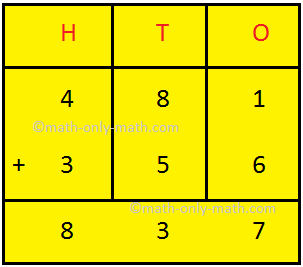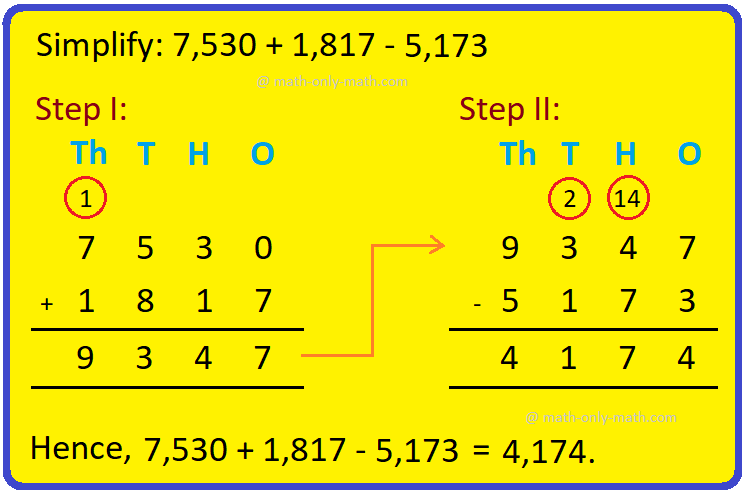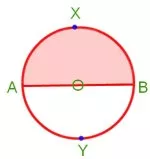Subscribe to our YouTube channel for the latest videos, updates, and tips.
Home | About Us | Contact Us | Privacy | Math Blog
Solving Quadratic Equations
Many word problems Involving unknown quantities can be translated for solving quadratic equations
Methods of solving quadratic equations are discussed here in the following steps.
Step I: Denote the unknown quantities by x, y etc.
Step II: use the conditions of the problem to establish in unknown quantities.
Step III: Use the equations to establish one quadratic equation in one unknown.
Step IV: Solve this equation to obtain the value of the unknown in the set to which it belongs.
Now we will learn how to frame the equations from word problem:
1. The product of two consecutive integers is 132. Frame an equation for the statement. What is the degree of the equation?
Solution:
Method I: Using only one unknown
Let the two consecutive integers be x and x + 1
Form the equation, the product of x and x + 1 is 132.
Therefore, x(x + 1) = 132
⟹ x2 + x - 132 = 0, which is quadratic in x.
This is the equation of the statement, x denoting the smaller integer.
Method II: Using more than one unknown
Let the consecutive integers be x and y, x being the smaller integer.
As consecutive integers differ by 1, y - x = 1 ........................................... (i)
Again, from the question, the product of x and y is 132.
So, xy = 132 ........................................... (ii)
From (i), y = 1 + x.
Putting y = 1 + x in (ii),
x(1 + x) = 132
⟹ x2 + x - 132 = 0, which is quadratic in x.
Solving the quadratic equation, we get the value of x. Then the value of y can be determined by substituting the value of x in y = 1 + x.
2. The length of a rectangle is greater than its breadth by 3m. If its area be 10 sq. m, find the perimeter.
Solution:
Suppose, the breadth of the rectangle = x m.
Therefore, length of the rectangle = (x + 3) m.
So, area = (x + 3)x sq. m
Hence, by the condition of the problem
(x + 3)x = 10
⟹ x2 + 3x - 10 = 0
⟹ (x + 5)(x - 2) = 0
So, x = -5,2
But x = - 5 is not acceptable, since breadth cannot be negative.
Therefore x = 2
Hence, breadth = 2 m
and length = 5 m
Therefore, Perimeter = 2(2 + 5) m = 14 m.
x = -5 does not satisfy the conditions of the problem length or breadth can never be negative. Such a root is called an extraneous root. In solving a problem, each root of the quadratic equation is to be verified whether it satisfies the conditions of the given problem. An extraneous root is to be rejected.
Quadratic Equation
Introduction to Quadratic Equation
Formation of Quadratic Equation in One Variable
General Properties of Quadratic Equation
Methods of Solving Quadratic Equations
Examine the Roots of a Quadratic Equation
Problems on Quadratic Equations
Quadratic Equations by Factoring
Word Problems Using Quadratic Formula
Examples on Quadratic Equations
Word Problems on Quadratic Equations by Factoring
Worksheet on Formation of Quadratic Equation in One Variable
Worksheet on Quadratic Formula
Worksheet on Nature of the Roots of a Quadratic Equation
Worksheet on Word Problems on Quadratic Equations by Factoring
From Solving Quadratic Equations to HOME PAGE
Didn't find what you were looking for? Or want to know more information about Math Only Math. Use this Google Search to find what you need.
Recent Articles
-
5th Grade Circle Worksheet | Free Worksheet with Answer |Practice Math
Jul 11, 25 02:14 PM
In 5th Grade Circle Worksheet you will get different types of questions on parts of a circle, relation between radius and diameter, interior of a circle, exterior of a circle and construction of circl… -
Construction of a Circle | Working Rules | Step-by-step Explanation |
Jul 09, 25 01:29 AM
Construction of a Circle when the length of its Radius is given. Working Rules | Step I: Open the compass such that its pointer be put on initial point (i.e. O) of ruler / scale and the pencil-end be… -
Combination of Addition and Subtraction | Mixed Addition & Subtraction
Jul 08, 25 02:32 PM
We will discuss here about the combination of addition and subtraction. The rules which can be used to solve the sums involving addition (+) and subtraction (-) together are: I: First add -
Addition & Subtraction Together |Combination of addition & subtraction
Jul 08, 25 02:23 PM
We will solve the different types of problems involving addition and subtraction together. To show the problem involving both addition and subtraction, we first group all the numbers with ‘+’ and… -
5th Grade Circle | Radius, Interior and Exterior of a Circle|Worksheet
Jul 08, 25 09:55 AM
A circle is the set of all those point in a plane whose distance from a fixed point remains constant. The fixed point is called the centre of the circle and the constant distance is known






New! Comments
Have your say about what you just read! Leave me a comment in the box below. Ask a Question or Answer a Question.